SAR solidifies key role in initiative as MoUs, commercial agreements inked
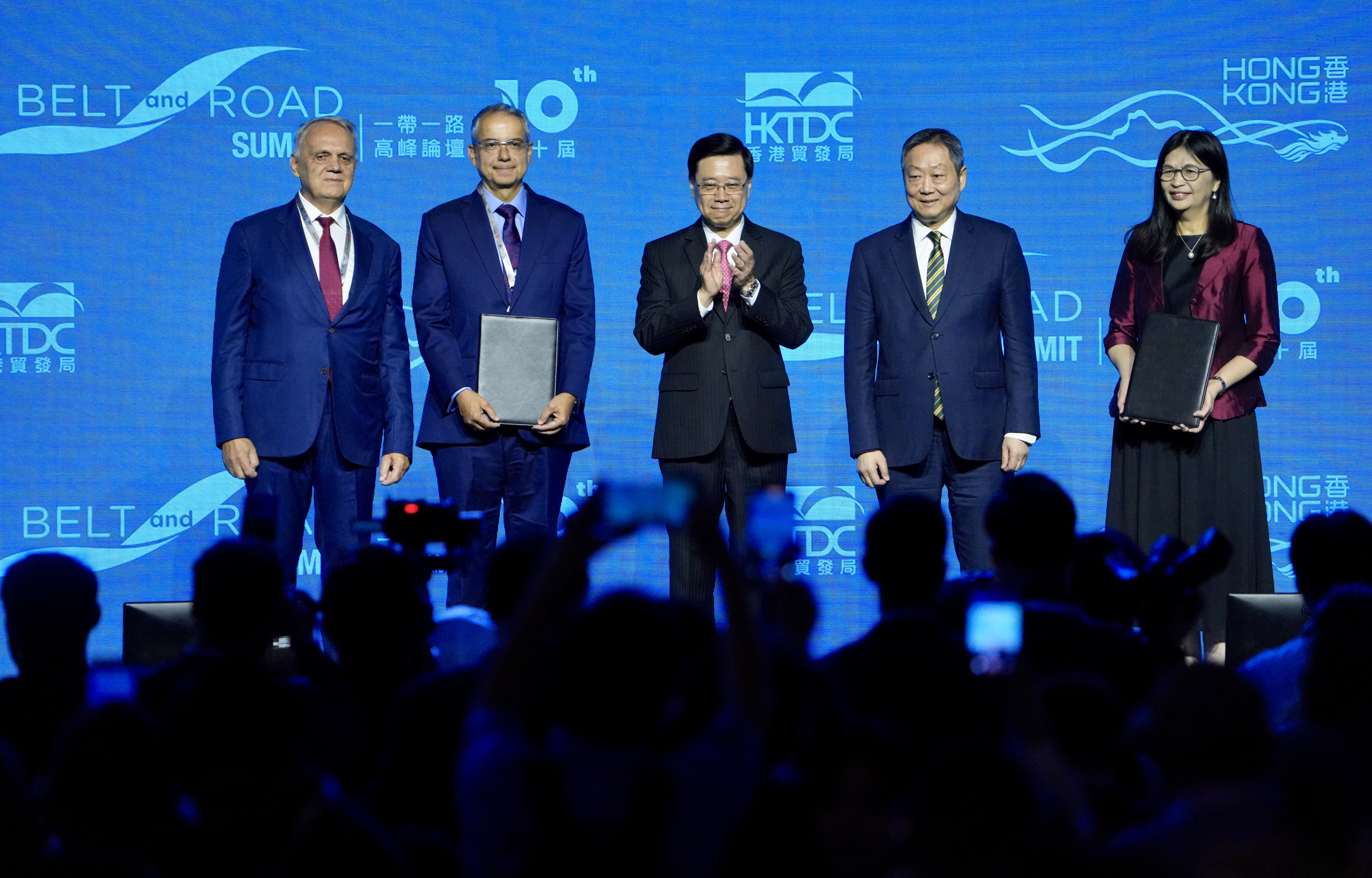
Hong Kong’s Belt and Road Summit got off to a spectacular start on Wednesday with the signing of nine memorandums of understanding and 36 commercial agreements, coupled with a key announcement from the Ministry of Commerce on a proposed joint free trade zone for the Chinese mainland and the Hong Kong and Macao special administrative regions.
Speaking at the opening ceremony, Hong Kong Chief Executive John Lee Ka-chiu revealed that the nine MoUs touch on official cooperation in areas such as dispute avoidance and resolution, customs, and anti-corruption efforts.
Additionally, 36 commercial agreements — collectively valued at nearly $1 billion — were announced at the event across finance, technology, logistics, education and professional services.
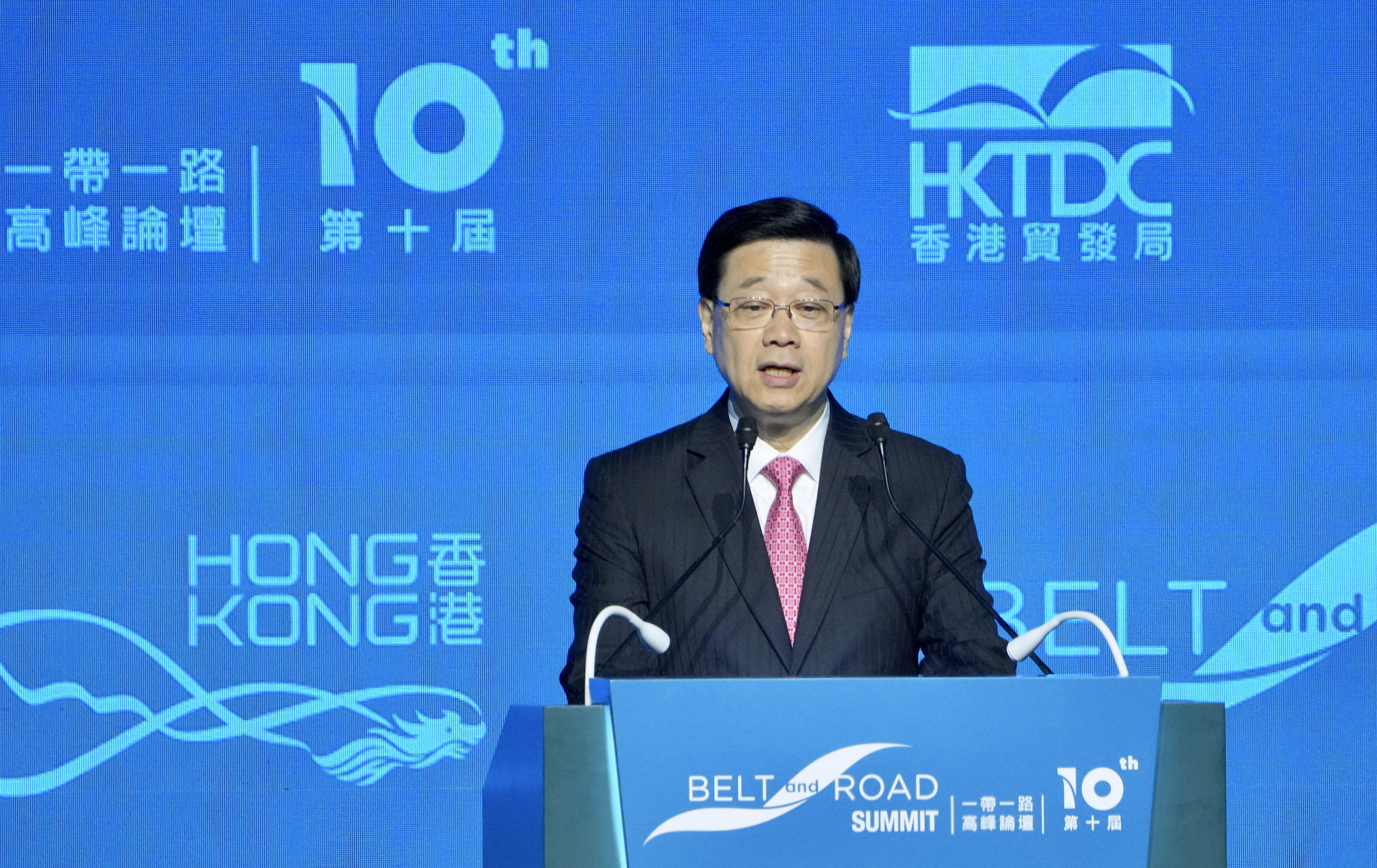
“Hong Kong is an ideal Belt and Road hub, connecting Asia with the world as a super-connector and super value-adder. Hong Kong, being dynamic, innovative and sustainable, will continue to promote the high-quality development of the Belt and Road Initiative,” Lee told dignitaries.
Lee credited Hong Kong’s role as a key BRI platform to its unique “one country, two systems” policy, paired with a mature legal system and judicial institutions that safeguard investors. The principle also ensures the city’s continued prosperity as a global East-meets-West cultural exchange hub, he added.
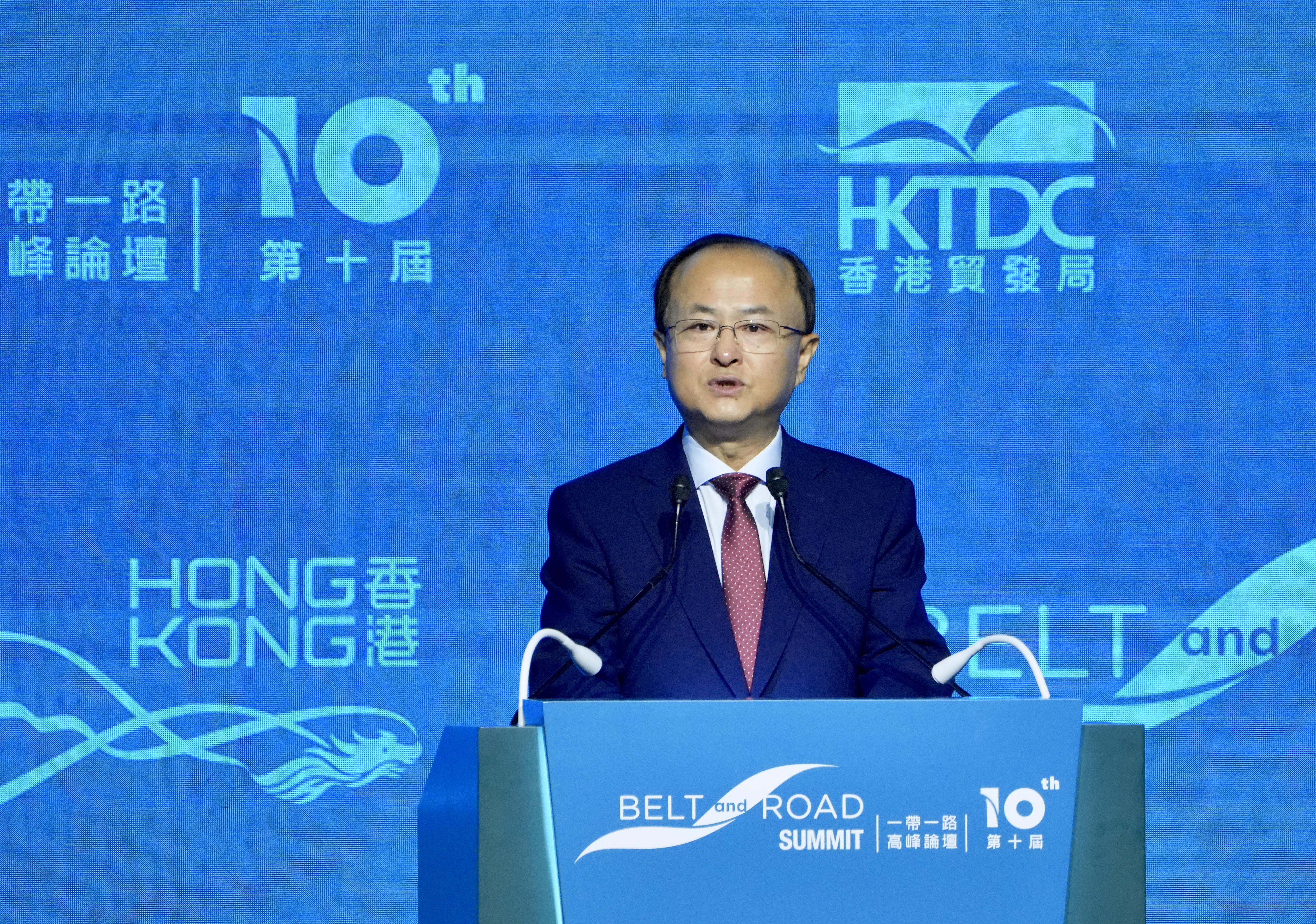
Speaking at the event, Yan Dong, vice-minister of commerce, said the central government is studying the establishment of a single free trade zone encompassing the Chinese mainland, Hong Kong and Macao. He added that the ministry supports Hong Kong’s early accession to the Regional Comprehensive Economic Partnership to further expand its external economic and trade networks.
In 2024, China’s trade with economies involved in the BRI hit $3.1 trillion — over half its total foreign trade. Bilateral direct investment reached $67 billion, deepening industrial and supply chain integration, Yan said.
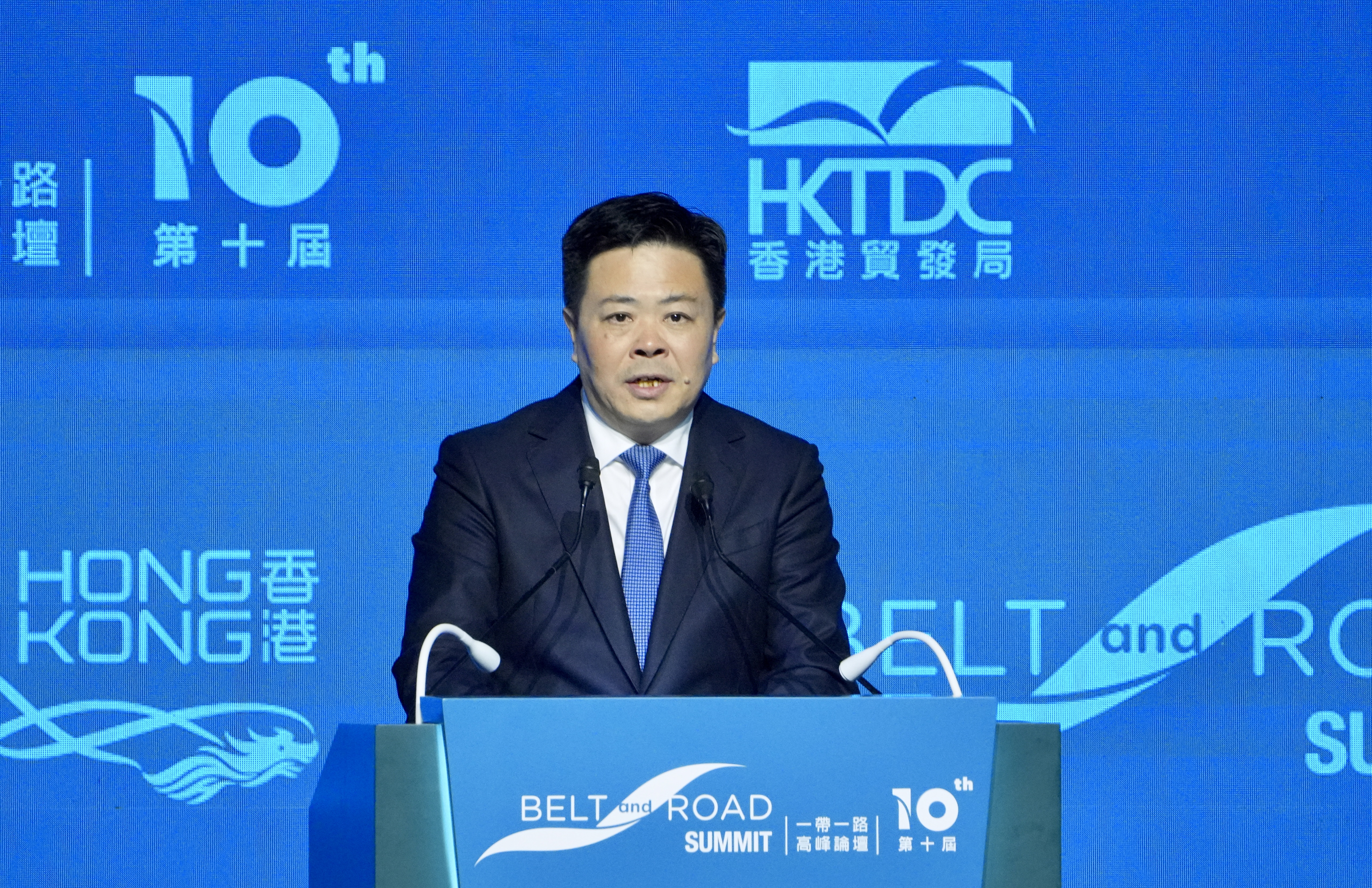
Xiao Weiming, deputy secretary-general of the National Development and Reform Commission, affirmed Hong Kong’s key financial role in the BRI. He highlighted the potential of a Hong Kong-Shanghai collaboration to enhance the Chinese mainland’s global financial influence and Hong Kong’s potential as a launchpad for Chinese enterprises expanding abroad.
Li Zhen, vice-chairman of China’s State-owned Assets Supervision and Administration Commission of the State Council, noted that more mainland State-owned enterprises are establishing financial and asset management bases in Hong Kong.
This move strengthens their risk management and ensures professional support for international projects amid global trade uncertainties, he added.
ALSO READ: 10th Belt and Road Summit aims to shape a shared future
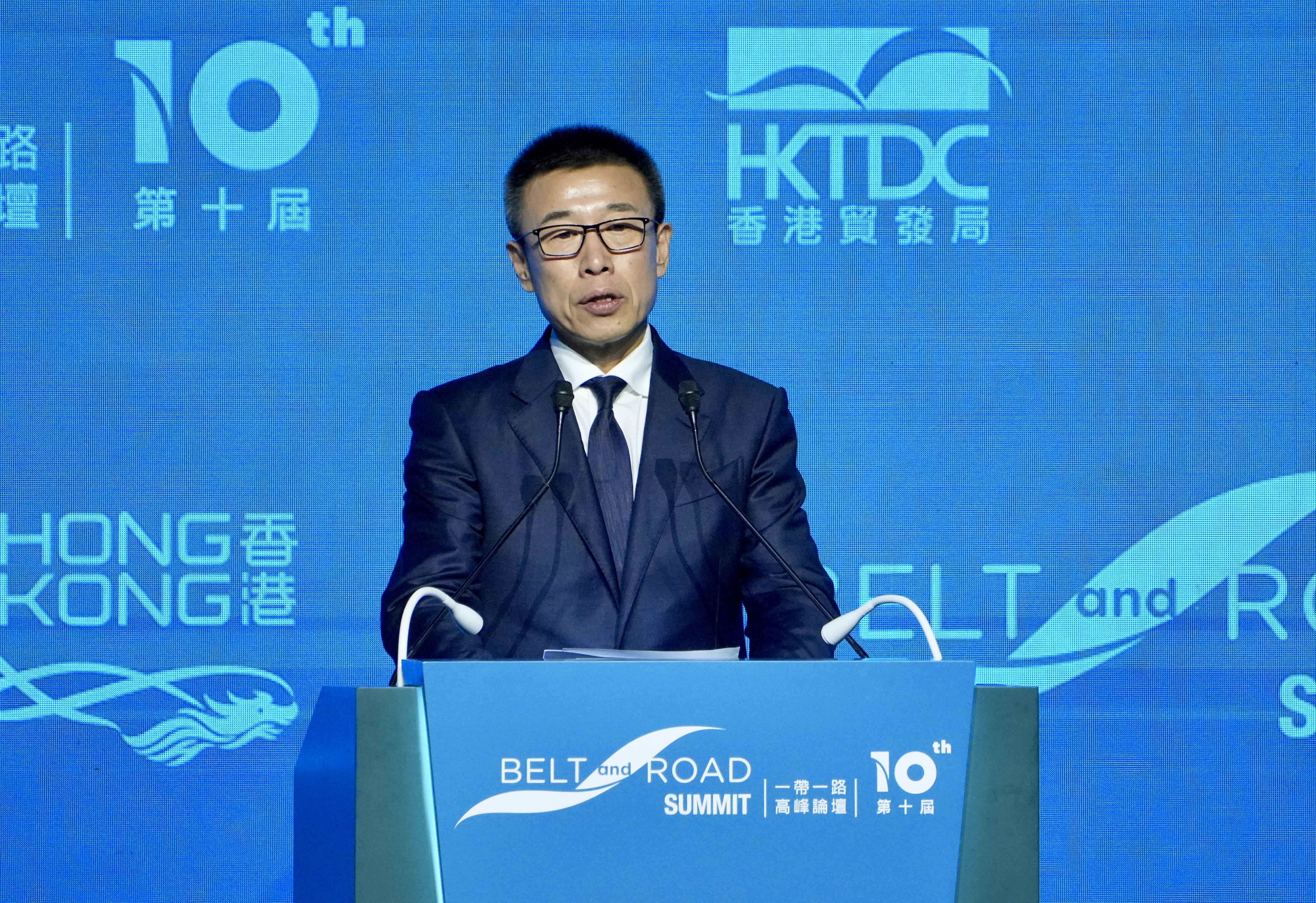
As of 2024, State-owned conglomerates have launched over 10,000 projects and entities across more than 180 countries and regions, including more than 200 large-scale signature infrastructure projects. Their total overseas assets exceed $9.6 trillion, according to Li.
Since 2016, the event has hosted over 700 global speakers, 660 exhibitors and 45,000 participants from more than 120 countries and regions, facilitating over 5,400 meetings and supporting 2,800 projects in infrastructure, green energy, finance and technology.
“Over the past decade, vital partnerships have been forged, impactful projects have been launched and cross-border ties have been strengthened (through the event),” Hong Kong Trade Development Council Chairman Frederick Ma Si-hang remarked, lauding the gathering as “a cornerstone event supporting the BRI”.

In his keynote speech, Sun Chanthol, deputy prime minister and first vice-chairman of the Council for the Development of Cambodia, said that this year’s theme, “Collaborate for Change — Shape a Shared Future”, is especially timely.
Amid global trade fluctuations, he stressed the urgent need for sustainability and collective action to tackle common challenges.
Sun highlighted Cambodia’s transformational progress, crediting its deep engagement with the BRI as a “lifeline” that has supplied essential resources and development partnerships.
He emphasized that infrastructure — including roads, bridges, airports, power plants and canals — acts as an engine of connectivity rather than a burden. To date, BRI projects have built more than 3,000 kilometers of roads and 60 major bridges across Cambodia.
“And that’s just the beginning — the beginning of another decade of business, of investment and of cooperation,” Lee said.
Since its launch in 2013, the BRI has significantly expanded its global reach across Eurasia, Africa and Latin America.
Hong Kong has actively broadened its trade ties under the drive, securing FTAs with 14 BRI partners, investment pacts with about 20 economies and double taxation agreements with 37 BRI jurisdictions.
Trade between Hong Kong and BRI economies surged nearly 80 percent by 2024, reaching over $276 billion — growing three times faster than the city’s overall external trade, Lee said. Around 1,400 companies from BRI member countries have also established a presence in the city, he added.
Hong Kong’s two-day Belt and Road Summit, organized by the Hong Kong Special Administrative Region government and the Hong Kong Trade Development Council, features over 90 high-level speakers from 18 BRI economies and is being attended by 6,000 participants from various countries, international organizations and enterprises.
Contact the writer at wanqing@chinadailyhk.com


